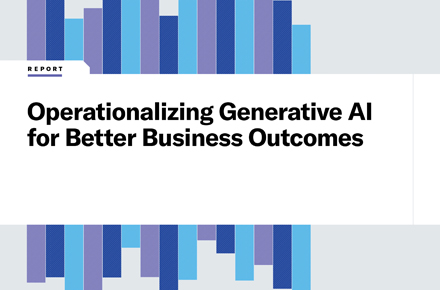How digital agility across data and apps drives competitive advantage
November 6, 2025 / Unisys Corporation
Short on time? Read the key takeaways:
- Organizations with six-month development cycles lose opportunities to competitors who can launch in weeks. The difference is digital agility.
- Data democratization creates the foundation by modernizing architecture, embedding governance, and providing secure, role-based access to insights.
- Application modernization through microservices, containerization, and automation compresses development cycles from months to days.
- Digital agility delivers four concrete advantages: faster adaptation to market shifts, access to new revenue streams, accelerated time to market, and improved experiences at lower costs.
A global market leader spots a multimillion-dollar opportunity: launch a unified digital ecosystem with integrated client data, analytics, and personalized dashboards. They have the brand, the customer base, and the vision. When they turn to their teams to execute, they hit three walls.
First, their client data sits trapped in legacy silos. Second, their monolithic applications demand six-month development cycles. Third, their IT teams are buried under maintenance and security backlogs.
Meanwhile, a smaller competitor launches exactly what they envisioned. Clients migrate to the sleeker solution. Market share shifts.
Same opportunity. Vastly different outcomes. The difference comes down to digital agility—the ability to act on insights before the window closes.
That agility rests on two foundations: data that flows freely and applications that adapt quickly. Both need to work together, and both require rethinking how traditional IT infrastructure operates.
The data foundation problem
Most organizations can't move fast because their data can't move at all. Critical information is locked in departmental systems and refreshed overnight in on-premises data warehouses. By the time business teams access the reports, the numbers are already outdated.
Successful organizations take a different approach. They modernize their data foundation by migrating to cloud-native lakehouse architectures. Data flows in real time from applications into the cloud, where it's stored, cleaned, and made instantly available. This single shift eliminates delays, reduces infrastructure costs, and provides teams with reliable, always-on access to the information they need.
But accessibility alone isn't enough. When a customer record is updated with an address change, data governance ensures that the update is validated at the point of entry, automatically synced across systems, and tracked for compliance. By the time marketing, finance, or support teams need it, they can trust it's accurate, secure, and compliant. That's governance working across the data life cycle, from creation through consumption.
Consider how this plays out across different industries. In healthcare, a hospital can predict which patients are at risk of readmission, allowing doctors to intervene early rather than react later. In banking, analytics flag unusual transaction patterns in real time, stopping fraud before it occurs. For airlines, maintenance needs get predicted before parts fail, keeping planes in the air instead of grounded.
The pattern is consistent: organizations move from lagging indicators to leading ones. They shift from reacting to anticipating.
Secure access translates to speed
Data foundation work means nothing if teams can't access what they need. The key is balance – making data both usable and protected through role-based access controls.
For example, a marketing manager sees customer purchase history to design campaigns, but not sensitive payment details. A finance counterpart accesses billing data without viewing personal preferences. This fine-grained control means teams can work at speed without compromising security or compliance.
When you layer advanced analytics on top of governed and accessible data, retailers move from tracking sales to predicting which products will be in demand weeks in advance. Shelves get stocked with the right SKUs before customers arrive. That's the advantage of combining a reliable data infrastructure with intelligent systems.
Application architecture determines velocity
Great data paired with slow applications still leaves you stuck. The organizations winning on speed have modernized their approach to building and deploying software.
Instead of monolithic systems that require months to update, they've adopted microservices and containerization. They break large applications into smaller, manageable components that can be developed, deployed, and scaled independently on platforms like Kubernetes.
This decomposition provides agile teams with the autonomy to innovate and rapidly release new features. When you combine this with automation across integration, testing, and deployment pipelines, teams respond to market demands and user feedback in days rather than quarters.
The modular approach has three advantages.
- Flexibility: Updates happen quickly without touching the entire system.
- Efficiency: Automated processes reduce manual intervention and errors.
- Resilience: If one component fails, the rest continues operating.
Continuous integration and continuous deployment practices allow for constant improvements. Teams experiment, measure results, and iterate based on real user feedback. When paired with data insights, this creates a cycle of innovation that consistently delivers outcomes users value.
What digital agility delivers
By building digital agility, your organization can:
- Adapt to market shifts. When conditions change, agile organizations adjust quickly. A future-proof, scalable IT infrastructure bends without breaking, allowing you to respond while others are still planning their response.
- Capture new revenue. Opportunities that were previously out of reach are achievable. You can rapidly spin up new services, test features, and measure customer feedback, then scale what works before the window closes.
- Accelerate time to market. Automation, efficiency, and real-time insights compress development cycles. What took six months now takes weeks. You reach customers while demand is fresh and competitors are still in planning phases.
- Improve experience while reducing costs. Better user experiences don't require larger budgets. When systems operate efficiently and teams focus on innovation rather than maintenance, you deliver more value at lower total cost of ownership.
How to get started
Building digital agility requires understanding your current position. Most organizations face gaps between their current capabilities and what the market demands in terms of velocity.
Laying the foundation for digital agility involves three areas:
- Assess your environment by mapping critical assets, systems, and dependencies. Identify where data sits trapped and where applications create bottlenecks.
- Develop a strategy that aligns with your risk tolerance and business objectives.
- Establish or modernize your fundamentals – the core architecture and processes that enable speed.
This work doesn't happen overnight, but it compounds. Each improvement in data accessibility or application modularity creates new possibilities. The organization that starts today builds advantages that widen over time.
The competitive reality
Companies leveraging digital agility now will lead their markets tomorrow. Those maintaining six-month development cycles while competitors move in weeks face a widening gap that becomes harder to close.
The question for your organization: which side of that gap will you be on?
Learn how Unisys' approach to application transformation, data and cloud management can help you build the agility your business needs.
Discover how digital agility fuels revenue.




















